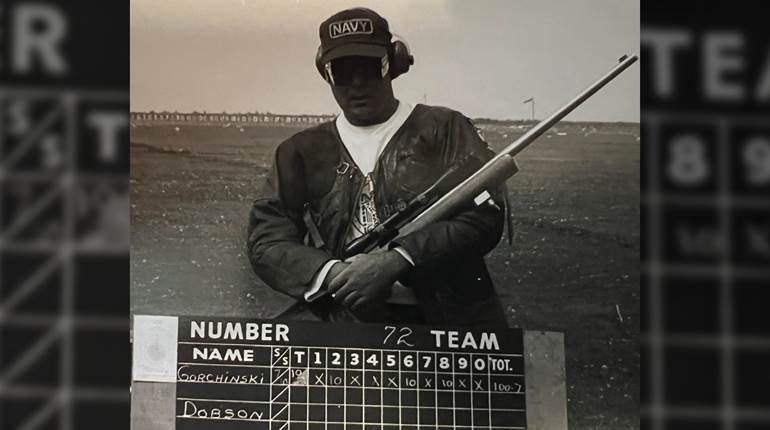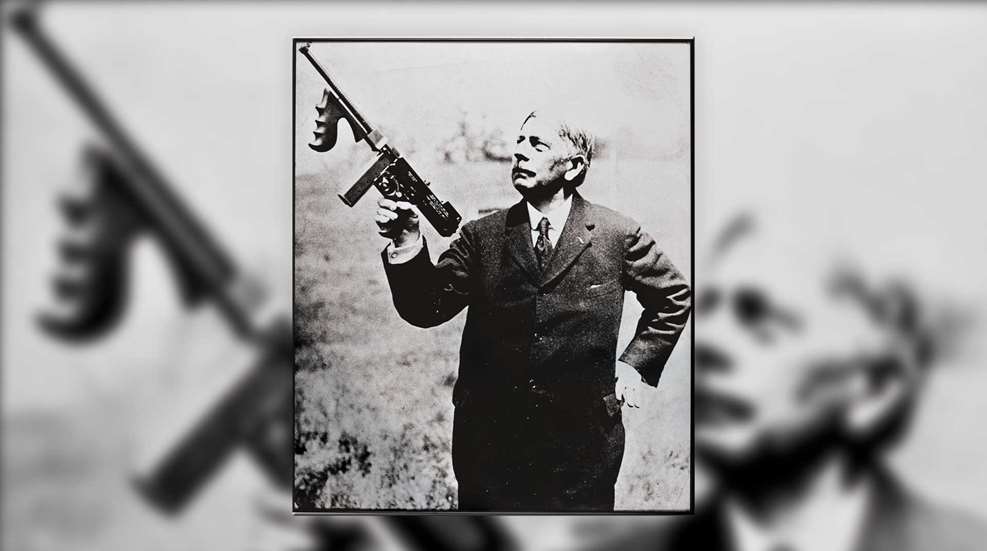
This article, "The First Thompsons," appeared originally in the February 2006 issue of American Rifleman. To subscribe to the magazine, visit the NRA membership page and select American Rifleman as your member magazine.
In 1916, the Auto-Ordnance Corporation was established to create a new automatic rifle for the armed forces. The company was the creation of retired U.S. Army Gen. John T. Thompson, one of America’s leading firearm experts of the day, and he was backed by Thomas Fortune Ryan, a powerful Wall Street financier. Thompson had been in charge of small-arms production for the Army before going to work in the private sector for the Remington Arms Co. While working for Remington, Thompson was responsible for the set-up and operation of Remington’s Eddystone Arsenal, and he believed that through the initiative of a private corporation the creation of new firearms would be possible. The stated goal of Auto-Ordnance was to develop a new automatic rifle for the U.S. military.
An engineering department was established in Cleveland to work with the Warner & Swasey Co. Thompson was very familiar with the company from its work with optics and artillery-laying sights, and he put two very young engineers in charge of design and development. They were Theodore Eickhoff, a graduate of Purdue University who had worked for the U.S. Ordnance Department since graduation, and Oscar Payne, a self-taught practical tinkerer and draftsman. The engineering department worked for two years with limited success to develop an automatic rifle using the Blish Locking System. This innovative design incorporated a new principle for locking the bolt and breech of the firearm based on the Blish Principle of Metallic Adhesion.
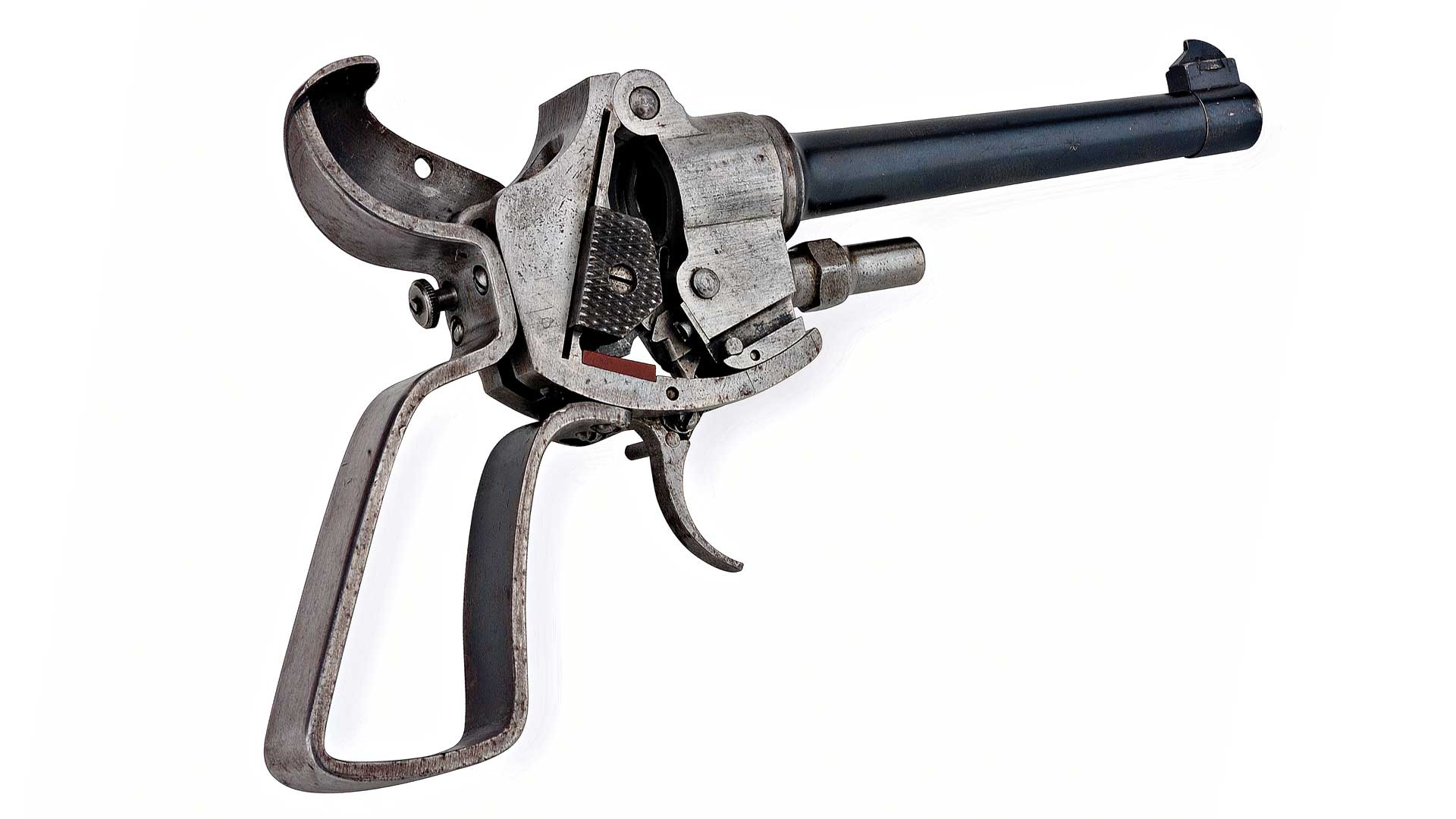
The principle, simply stated, is that two different metals will adhere to one another under high pressure, but will move against each other (i.e., slide) when the high pressure is removed. A patent demonstration model was built by Capt. John Blish, and the pistol was used to demonstrate his patent application and, later, to demonstrate to Auto-Ordnance engineers how his theories worked.
The pistol used a .30 (7.65 mm) Luger barrel attached to the frame. When loaded, the bronze lock closed on the chambered round. On firing, the bronze lock was held in place by the chamber pressure from the cartridge until the bullet left the barrel. At this point, the pressure dropped, and with the residual gas pressure, the bronze wedge was forced back and down the rails. The cartridge case flew out the back and was deflected to the right by the pistol frame.
During experiments with rifle calibers, this system failed to work—unless the cartridges were oiled—as there was too much contact resistance with the chamber walls for extraction. During one of the later tests, however, the .45 ACP cartridge was found to function flawlessly. The engineers were directed to begin work on a new design incorporating the .45 ACP in September 1917.
With the full backing of Thompson, who had been instrumental in the original development of the .45 ACP and had overseen the development of the U.S. Model of 1911 pistol, the design team developed a series of submachine guns known as the Thompson Submachine Guns, Models of 1919. The Models of 1919 were not a single-production design, but rather a series of experimental prototypes. Each serially numbered receiver was a slightly modified version of those proceeding it. They are divided into two different series of designs, with the second series divided into four families, each subsequently divided into several sub-model designs. The total number of Models of 1919 produced of all types is believed to be about 40. Of those, only 11 are known to exist today, with only five known to be in private hands.

The first Model of 1919 was called the “Persuader,” and it was built in November 1917. This Thompson was designed to fire the .45 ACP cartridges from a cloth ammunition belt. That system, however, proved to be an unreliable means of feeding the rapid-fire Persuader. At best, engineers were able to fire only seven rounds before malfunctions in the feed system stopped the action.
Further development lead to the second series of 1919s known as the “Annihilators.” The first of these was a work-bench Annihilator Trial Mechanism. The Trial Mechanism was nothing more than a crude, experimental receiver, bolt and firing-pin assembly mounted to a test stand. Originally, this mechanism also was to be belt-fed. This fixture was used to validate a design based on improvements from the Persuader.
This design was produced as the “Annihilator I,” serial No. 1, Model of 1919. Serial No. 1 was designed to have “wings” in the receiver’s magazine well to support a group of Colt M1911 magazines to feed the arm. But this was soon discarded in favor of a newly designed 20-round box, as well as 50- and 100-round “spiral-feed” drum magazines. The 20-round box required an adapter to be mounted in the receiver, which had to be removed to mount a drum. While serial No. 1 functioned satisfactorily, several needed improvements were incorporated into the next family of Thompsons.
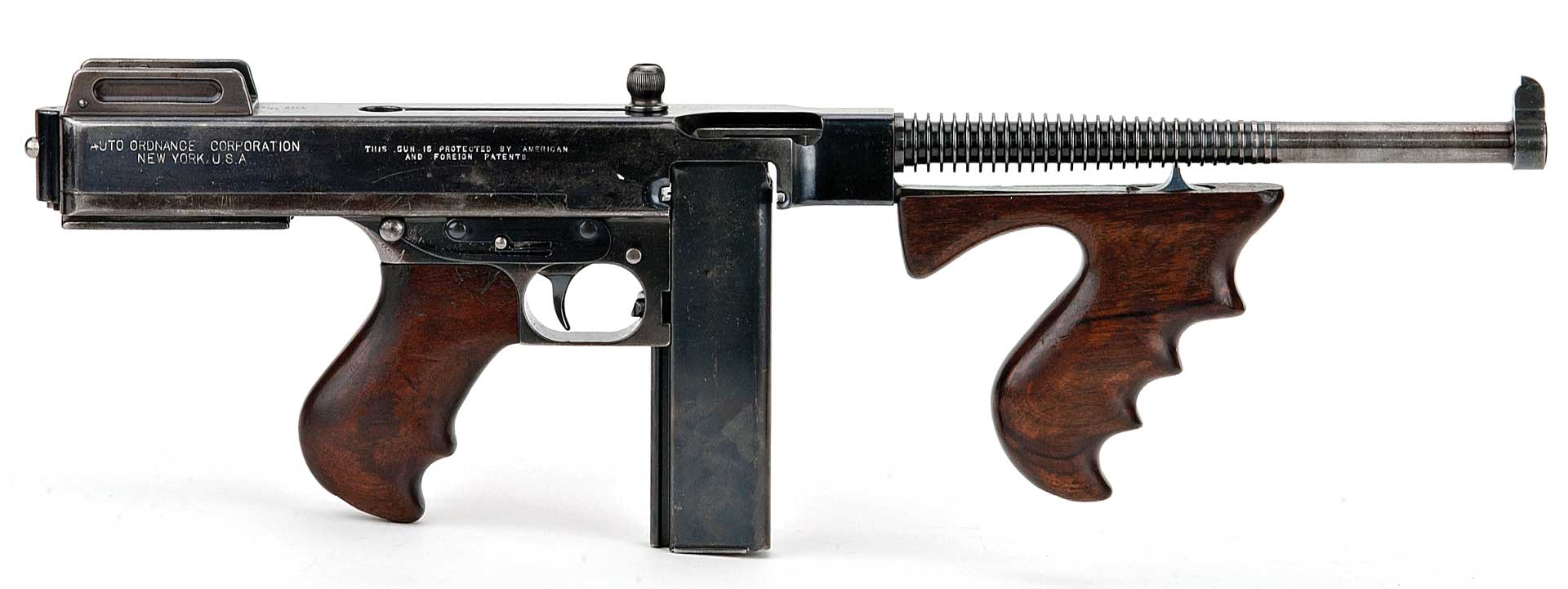
The “Annihilator II” family consisted of two finished firearms, serial Nos. 2 and 3. These were the first Thompsons demonstrated to the public. Serial No. 2 was demonstrated in New York in March 1919, and it fired 18,000 rounds without a malfunction. Interestingly, serial No. 2 was designed to accept a .45-cal. Maxim Silencer, which worked superbly, not only muffling the sound, but also reducing muzzle flash considerably. For a time, the silencer was a heavily advertised feature of the Thompson. Serial No. 3 was retained at the engineering department in Cleveland and used for testing a bayonet mount.
These two 1919s led to the final family known as the “Annihilator III” Thompsons, divided into at least five separate sub-model groups. The first of these groups was the “Annihilator III, Model C.” There were originally 10 sets of components built, but not all were finished into complete Model Cs. It is believed that only four were completed, serial Nos. 4, 5, 6 and 7. Only two Model C 1919s are known to exist today: Serial No. 6 is in the Rock Island Museum, and Serial No. 7, which is in a private collection.
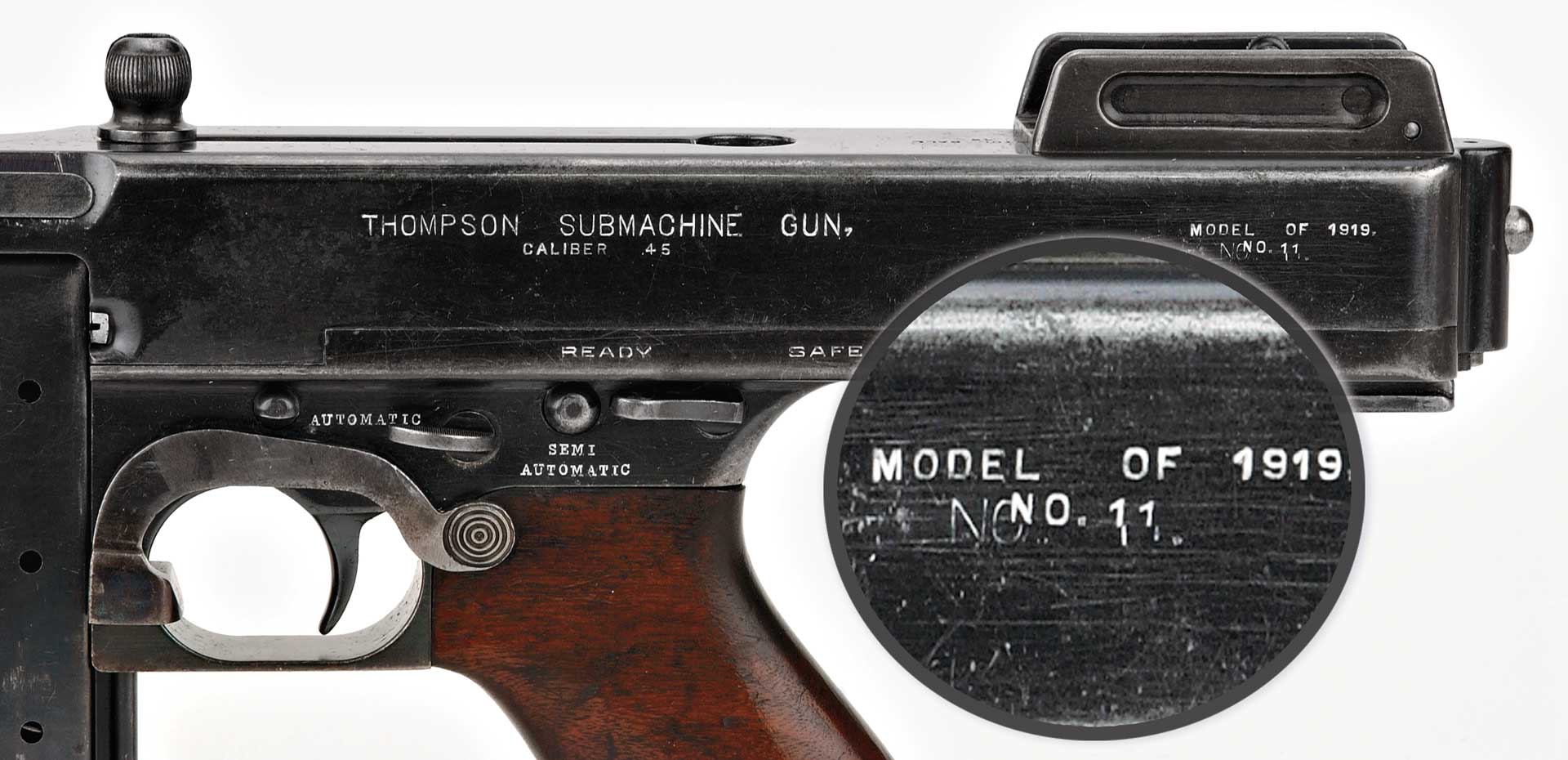
The Annihilator III, Model C, serial No. 7, is the oldest American-made submachine gun in private hands, today. This Thompson was not designed to have either front or rear sights or a buttstock. The actuator was offset to the right-hand side of the gun and also served as the gun’s firing-pin mechanism. The bolt face was square in profile with a square chamber face. The rate of fire was in excess of 1,500 rounds per minute (r.p.m.)—or 25 rounds per second. It was capable of firing in fully automatic with burst firing made possible only through trigger control.
In May 1919, Oscar Payne was given permission to build the Model F (Freak) designs of the 1919s. These prototypes were created to find out just how few parts were necessary to create a submachine gun. Serial No. 8 used only 11 parts, while serial No. 9 used 18 parts. These Model of 1919s were advertised very heavily by Auto-Ordnance, but were never developed beyond the prototype stage.
After several prolonged firing tests of serial Nos. 2 and 3, Auto-Ordnance engineers discovered that the one-piece actuator/firing pin design was weak. It was decided to separate the two functions into three parts. Two Model of 1919s were built and tested with the new design, serial Nos. 10 and 11. These were the first Thompsons built with the symmetrical actuator handle centered in the receiver. Serial No. 10 was subjected to a test firing of 20,000 rounds, and the gun functioned flawlessly.

Serial No. 11 was retained in the Auto-Ordnance Engineering Department and used as a test bed to demonstrate various designs. This Thompson was originally built with no sights, no buttstock and no semi-automatic selector lever. These changes all occurred later in the evolution of the designs of the Thompson Model of 1919. It was used and modified for each of these changes first before other 1919s were constructed or Colt’s production began. Sometime before Colt’s production, serial No. 11 was sent to Hercules Powder Co. and used for ammunition tests. The rate of fire for this Thompson was about 1,000 r.p.m.
Several more Model E 1919s were created for publicity and demonstrations, and serial No. 17, sub-model E, was originally created as a full-automatic Thompson. This gun was used for various advertisement photos and articles. It was later modified for the semi-automatic mode, buttstock attachment, and front and rear sights. Following the modifications, it was later used to equip a salesman with the latest Thompson and equipment kit.
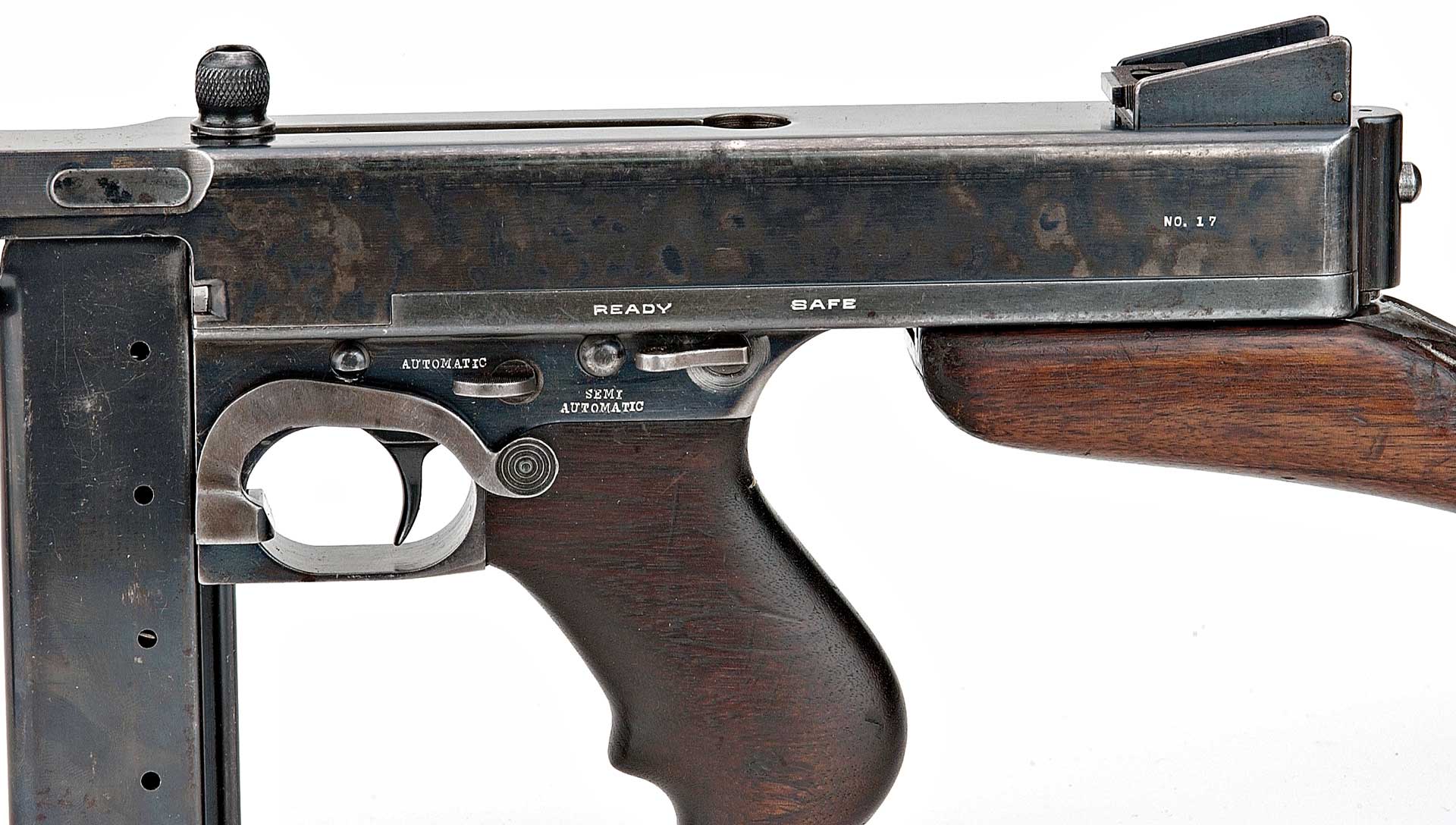
The salesman’s kit included: the Type C and Type L prototype drums; prototype Type “XX” 20-round, box magazines; and all available canvas equipment (five-cell, single-flap pouch, Model 1919 gun case, L-drum and C-drum pouches—all made by Mills Co.). All of the magazines were produced by John’s Machine and Tool Co., Cleveland during early 1920.
In the late 1920s, this kit was sent with an Auto-Ordnance salesman to Warsaw, Poland. Poland was then in the middle of a revolution, with both the Poles and Ukrainians fighting the Bolshevik Army. The salesman hoped to sell some to both the Poles and Ukrainians. In August 1920, when Bolshevik forces threatened to overrun Warsaw, he panicked and decided to return to the United States. He gave his sales kit to Col. Elbert E. Farman, Jr., then U.S. Military Attaché to Poland.
Today, the firearm itself is in remarkable condition considering its age and travels. This Thompson retains about 80 percent of its original bluing. The bluing was not a hard-finish bluing like that on the Colt’s of this era, so it is even more remarkable that any remains. This Thompson is the only known Model of 1919 that has a buttstock. While serial No. 11 is equipped for a stock attachment, no stock exists. The profile of the buttstock is elegant and very fragile, as noted by a repaired crack near the stock release button. Examination of the trigger housing indicates that the stock attachment was an afterthought, as is a “No. 17” visible on the frame through the attachment hardware.
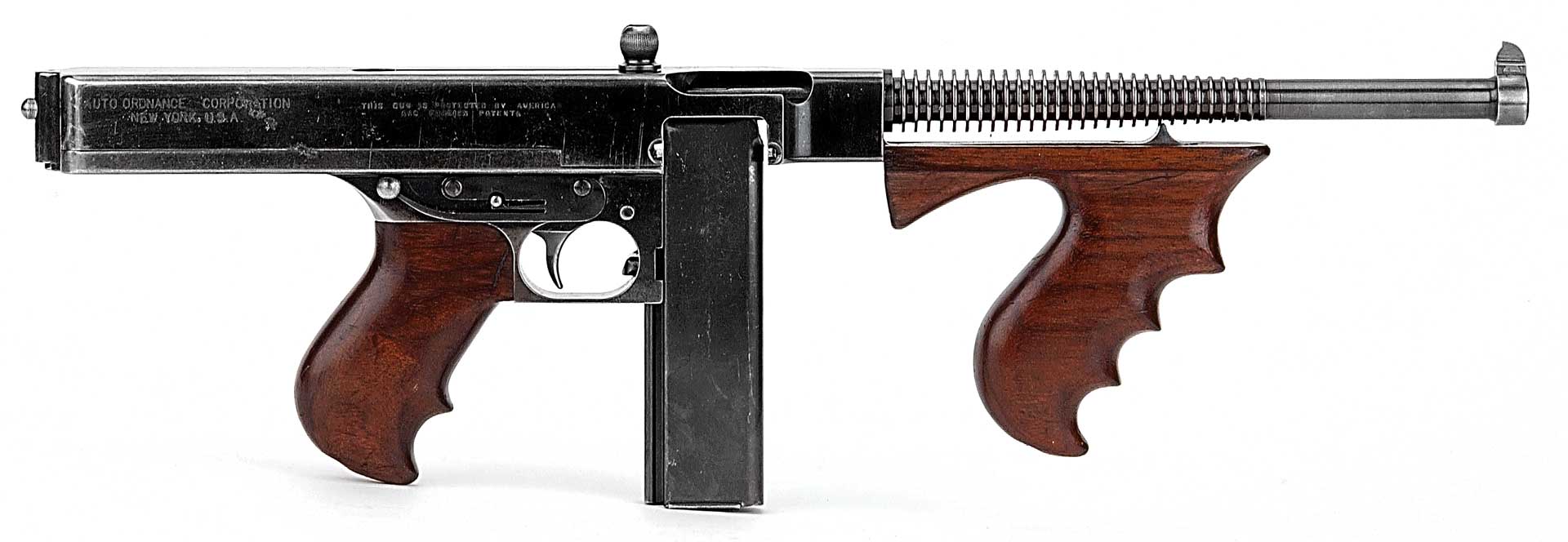
The final sub-model group of 1919s were the Model G Annihilator IIIs. These were the first 1919s to incorporate a round bolt face, centered actuator and redesigned firing-pin system, providing improved reliability. After Auto-Ordnance personnel were satisfied with its appearance and function, a production run of Thompsons was bid out to two different firms: Colt’s and Savage. Colt’s was awarded the initial production contract for 15,000 Thompsons. The contract language stated that: “The guns and magazines shall be manufactured by the Company [Colt’s] the same as Sample Gun No. 26 and its accompanying magazine, and within tolerances to be mutually agreed upon which will be shown on blue prints to be supplied by the Corporation [Auto-Ordnance].”
The Model of 1919, serial No. 26, was a combination of parts from several sub-model series and shows the many changes incorporated into the Thompson’s design evolution right up to, and during, production. Parts used in this gun originated in the full-automatic-only designs. The semi-automatic features were added later. Serial No. 26 was completely in the “white,” meaning no bluing or markings were applied when provided to Colt’s.
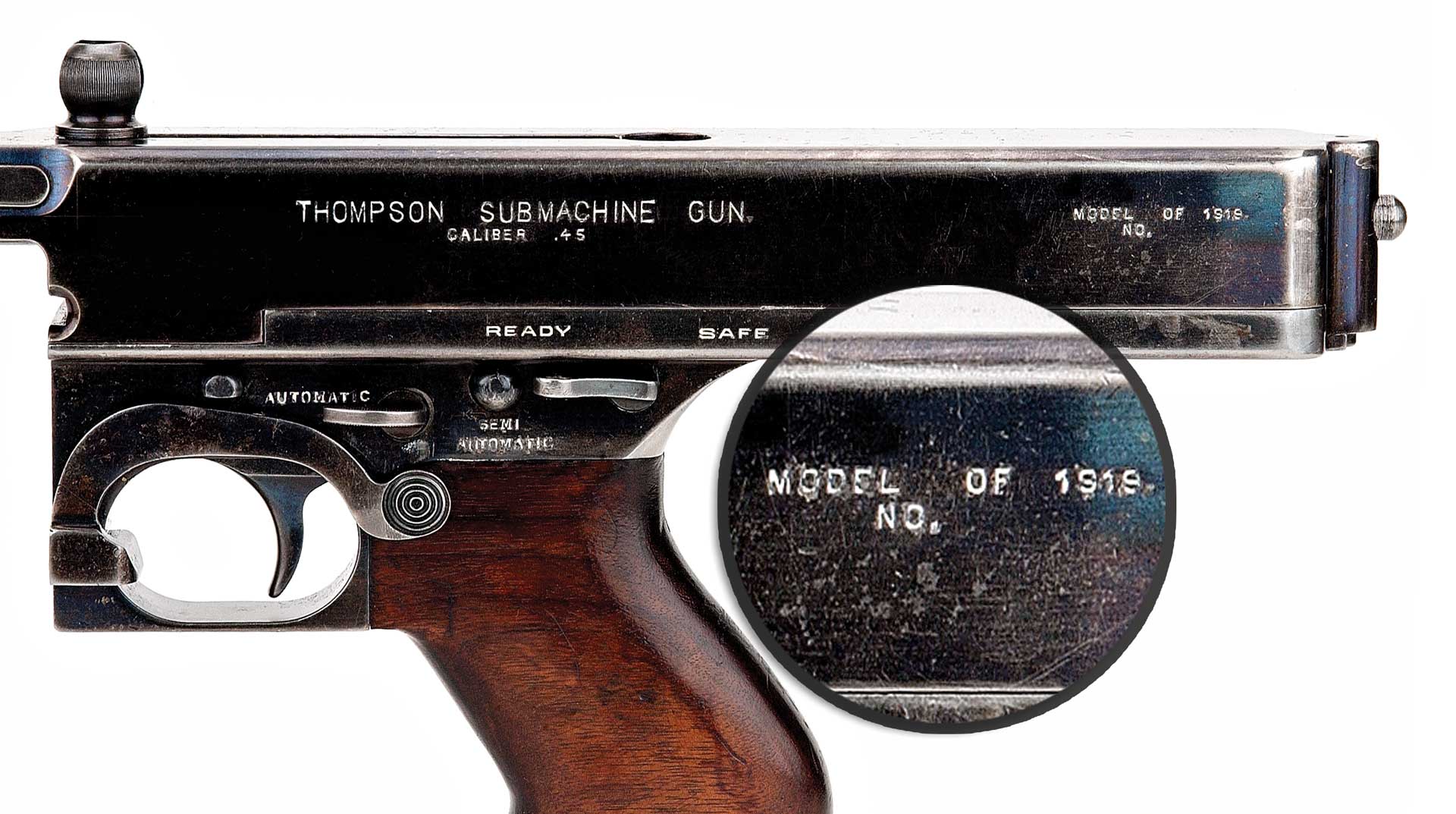
It is generally believed that 40 Model of 1919 prototypes were built by Auto-Ordnance’s Engineering Department in Cleveland. However, the Annihilator III, Model G, with serial No. “NO.” indicates that this information may be incorrect. None of the Model of 1919s were issued a serial number until they were completely assembled. This 1919 appears to be complete, but has no factory-stamped serial number. This Thompson was given to a Cleveland-area law enforcement officer by an Auto-Ordnance employee, sometime prior to 1921. This is the only unmodified Annihilator III, Model G known to exist.
The internal design of this Thompson is exactly the same as the later Colt’s production guns. It is interesting to note that on the receiver surface of this Model of 1919, the scribe marks used to lay out the machine cuts for manufacturing the firearm are plainly visible. This is yet another example of the truly fine American workmanship routinely exercised in firearm production during the early part of the 20th century. It was this version of the Model of 1919 that was used extensively in early sales demonstrations.
The success of the Auto-Ordnance Co., the Thompson and an American legend were all built upon these unique Models of 1919.













